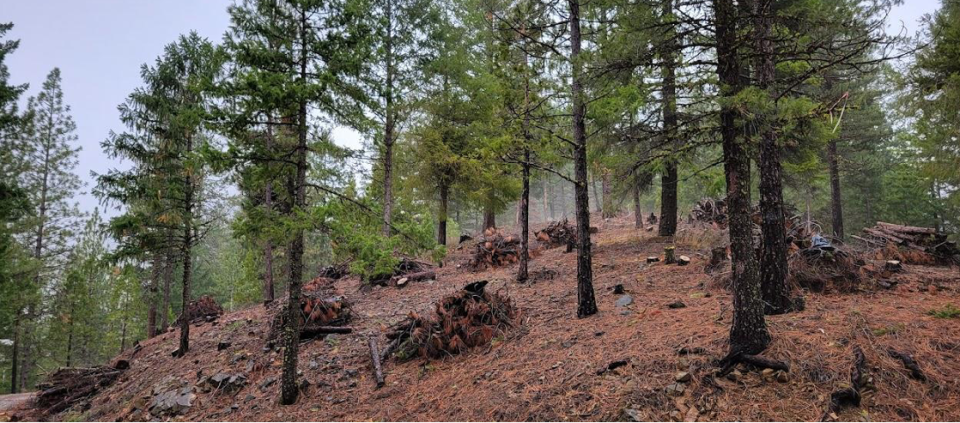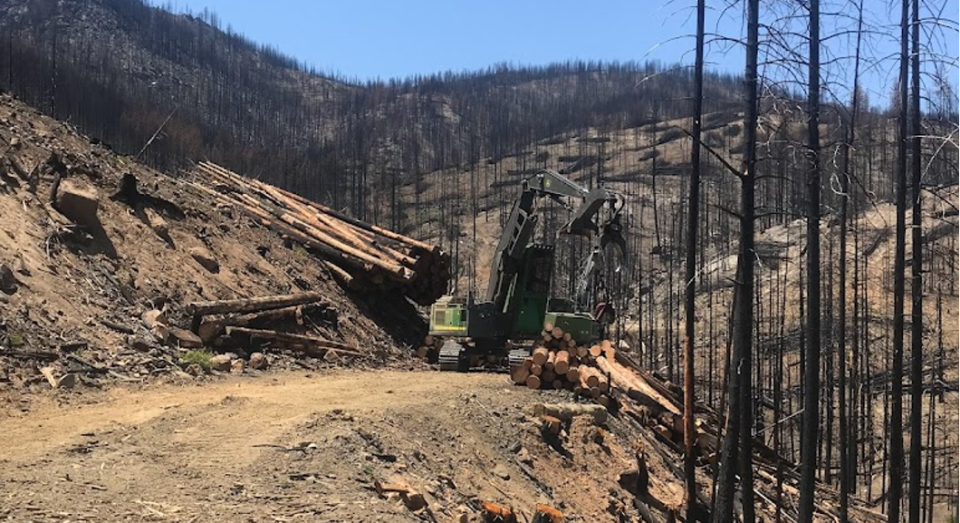
The Good Neighbor Authority (GNA) is an important partnership tool available to the USDA Forest Service and the Bureau of Land Management (BLM) with the intent to increase the pace and scale of forest, rangeland, and watershed restoration across jurisdictional boundaries.
Permanently enacted in the 2014 Farm Bill and amended in the 2018 Omnibus Appropriations and the 2018 Farm Bill, GNA enables States, Counties, and Indian Tribes to act as an agent of the federal agencies to complete authorized restoration services on federal and non-federal lands.
This webpage provides a repository of informational and educational resources about GNA for western state forestry agencies, federal agencies, and partners.
August 2024 | Authored by Jon Fitch, CAL FIRE
A Good Neighbor Authority (GNA) Master Agreement was signed between California Natural Resources Agency and the Forest Service Region 5 in January 2016. A Supplemental Project Agreement (SPA) between CAL FIRE and the Klamath National Forest was signed on August 13, 2018. An additional contract between CAL FIRE and Shasta Valley Resource Conservation District (SVRCD) enabled SVRCD to subcontract work for this project. At the time of development, the Craggy Mountain GNA Project was designed to be facilitated through three distinct stewardship contracts.

The Craggy Mountain Project is located on the Scott River and Oak Knoll Ranger Districts of the Klamath National Forest. The goal of the project is to improve fire resiliency on National Forest System lands surrounding the community of Yreka through reducing fuels and lowering stand density in strategic areas. The objective encompasses improving forest health, restoring habitat for wildlife, maintaining proper hydrological function of the watershed(s), and other tasks to address the growing risk of high intensity wildfire.
The specific treatments include manual and mechanical removal of ladder fuels along USDA Forest Service (Forest Service) property lines and road features. Additionally, value from timber harvested will be used to offset cost for the thinning of non-merchantable trees in forested stands within the project area. Funding for the project will be offset by the value of harvested trees in addition to appropriated Forest Service funds.
Adjustment to Wildfire
On July 29, 2022, the McKinney Fire burned through Craggy Mountain Project Area at high severity. The fire destroyed at least 185 structures (including most of the community of Klamath River) and caused 4 fatalities. Only 230 acres were completed (of the 1,500 acres planned) before the fire significantly impacted the site.

The altered environmental setting required a Supplemental Impact Report (SIR) to meet NEPA obligations for work to continue. This was completed in the fall of 2023. Currently, hazard tree removal is ongoing and other treatments are planned before the sunset of the SPA in January 2026. Additionally, a Forest-Wide GNA Stand-Alone Agreement is in development which includes both post fire restoration and fuel treatment across the Klamath National Forest.
Though acres treated exhibited lower fire severity than the residual forest, the overall treatment was not enough to significantly alter the catastrophic impacts of the McKinney Fire. The fire’s origin coupled with the extreme weather and pervasive overstocked baseline, contributed to the tragic outcome. This is another reminder that increasing pace and scale of restoration work on Forest Service lands is a critical need. GNA continues to provide a pathway for CAL FIRE and the Forest Service to act together.
To learn more about CWSF/WFLC GNA involvement, please contact Kelsey Delaney.
If you wish to submit a suggested resource for inclusion on this page, please complete our Google Form.